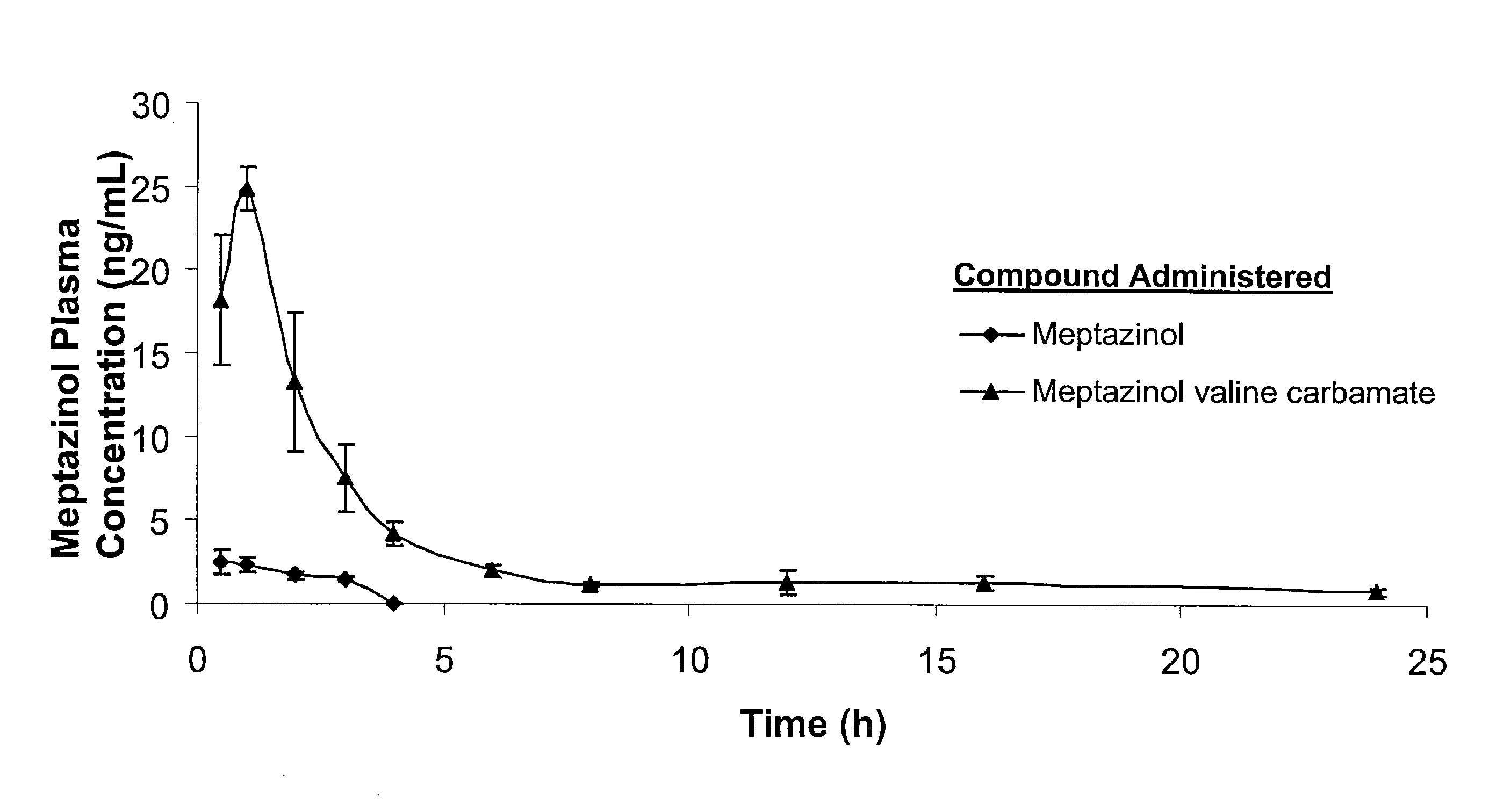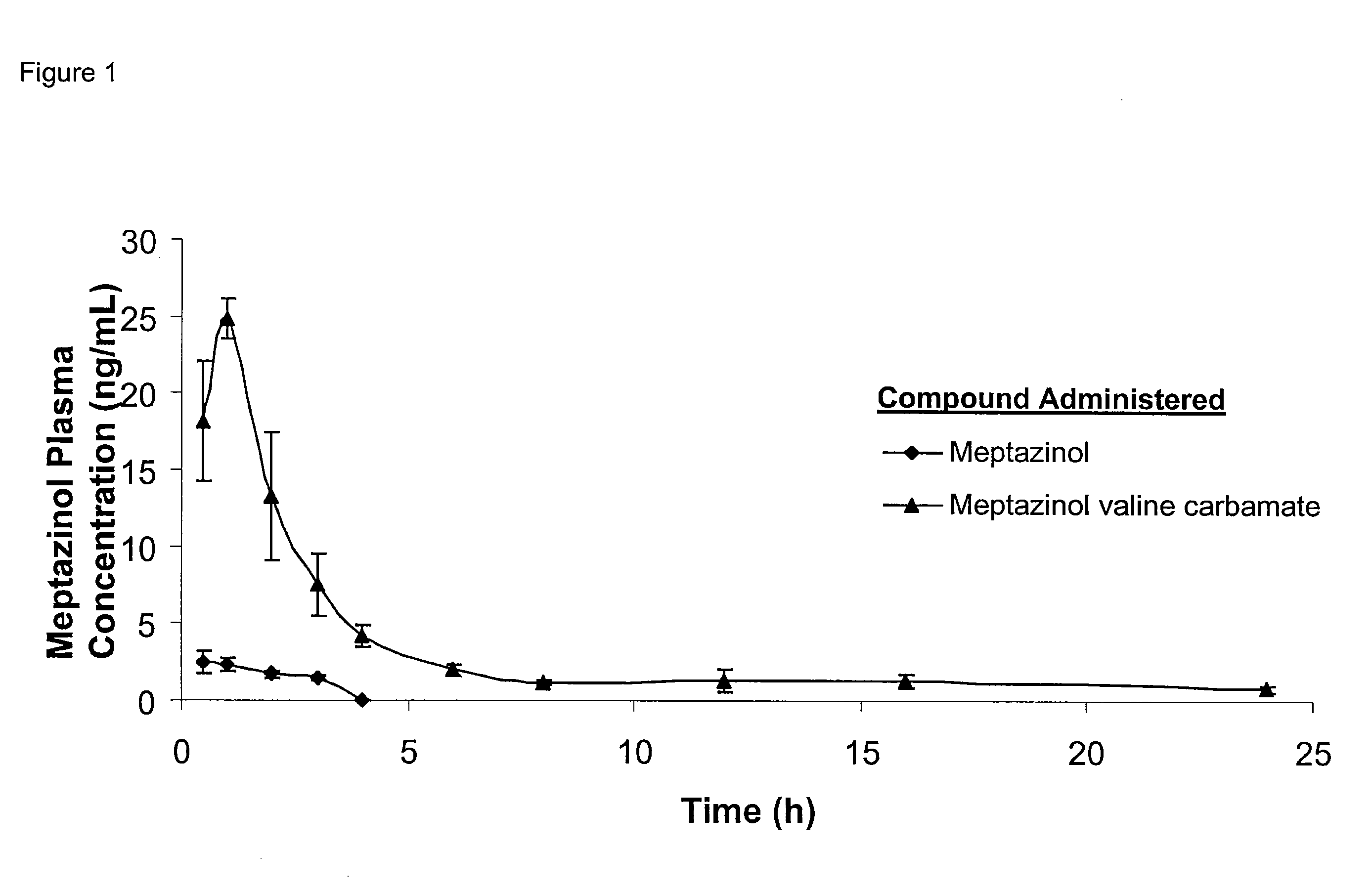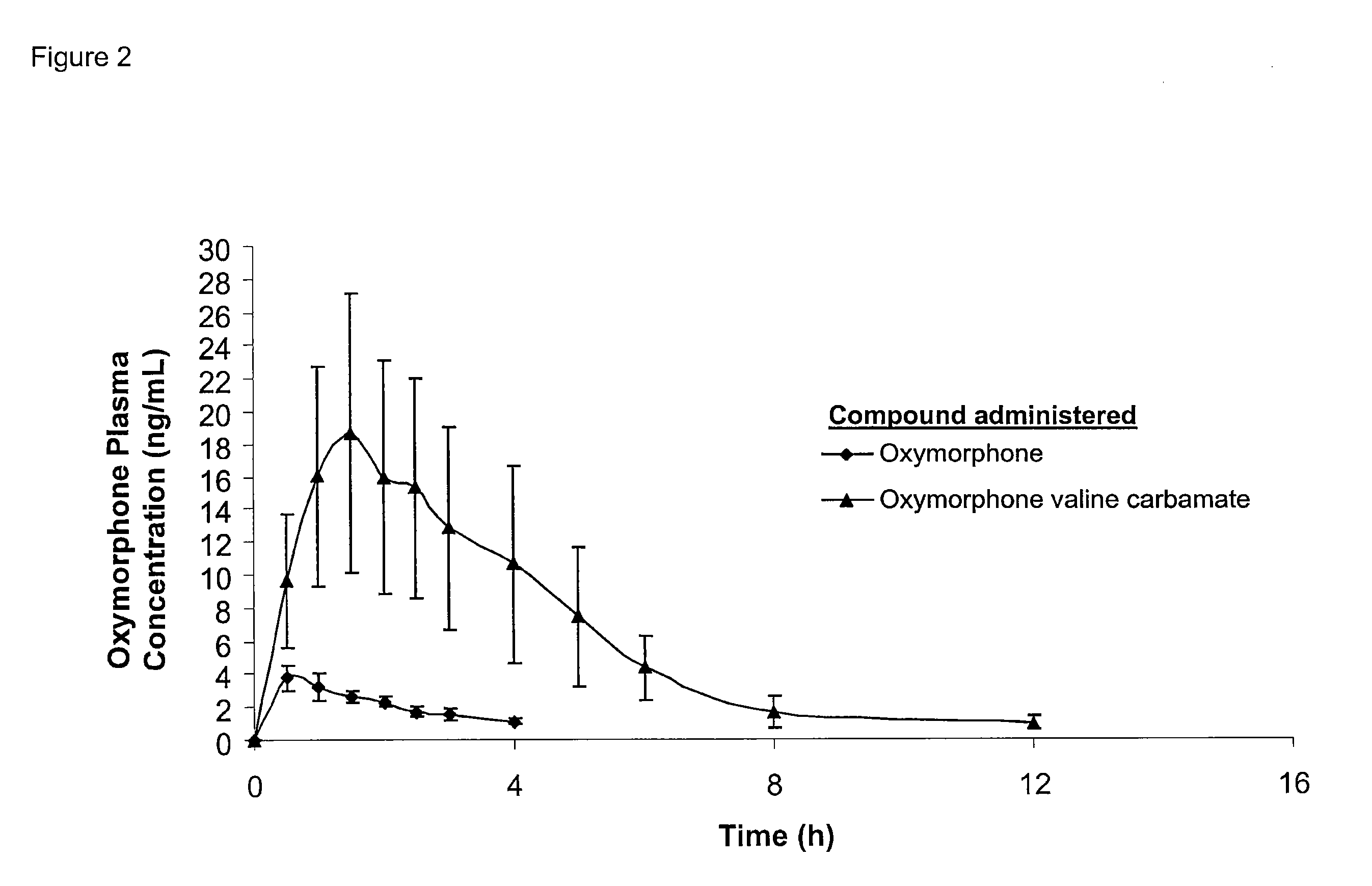Amino acid peptide pro-drugs of phenolic analgesics and uses thereof
a phenolic analgesic and peptide technology, applied in the field of amino acid peptide prodrugs of phenolic analgesics, can solve the problems of gastric ulceration, potential for hemorrhage, side effects, etc., and achieve the effects of reducing or eliminating pain, increasing the bioavailability of a phenolic analgesic, and low bioavailability
- Summary
- Abstract
- Description
- Claims
- Application Information
AI Technical Summary
Benefits of technology
Problems solved by technology
Method used
Image
Examples
example 1
Generic Route of Synthesis of Amino Acid Carbamate Conjugates of Opioids
[0220]A route to phenolic opioid prodrugs as HCl or TFA salts via amino acid tert-butyl esters (using valine as an example) is provided in Scheme 1, below.
[0221]A route to phenolic opioid prodrugs via amino acid benzyl esters is given in Scheme 2, below (using valine as an example).
[0222]The first route (using tert-butyl esters) is suitable for non-acid sensitive phenolic opiods, whereas the second route (using amino acid benzyl esters) is suitable for those which are acid sensitive but do not contain any reducible functionalities such as double bonds.
example 2
Synthesis of Meptazinol-(S)-Valine Carbamate Trifluoracetate
[0223]The synthesis of meptazinol-(S)-valine-carbamate is provided in Scheme 3, below.
[0224]Pyridine (1.56 mL, 19.3 mmol, 1.52 g) was added to a suspension of (s)-valine tert-butyl ester hydrochloride (1.0 g, 4.77 mmol) in anhydrous dichloromethane (30 mL) under nitrogen. The mixture was stirred and cooled in an ice bath, followed by the dropwise addition of diphosgene (0.37 mL, 3.10 mmol, 0.61 g) to the reaction mixture. The reaction mixture was then allowed to warm to room temperature, while stirring was continued for 2 hours. The mixture was diluted with dichloromethane and washed with ice-cold 1M hydrochloric acid and brine. The organic layer was dried (MgSO4) and concentrated to an oil (0.92 g).
[0225]The oil was dissolved in anhydrous toluene (40 mL). Meptazinol free base (1.05 g, 4.5 mmol) was then added, and the resulting solution was heated at reflux for 4 hours. The solvent was partially evaporated and the residue ...
example 3
Synthesis of Meptazinol-(S)-Valine Carbamate Hydrochloride
[0229]Meptazinol-(S)-valine carbamate hydrochloride was synthesized as shown in Scheme 4, below.
[0230]Initially meptazinol-(S)-valine carbamate zwitterion was dissolved in dichloromethane and a solution of hydrogen chloride in diethyl ether was added. The corresponding hydrochloride salt was obtained as a glassy solid following removal of the solvents.
PUM
| Property | Measurement | Unit |
|---|---|---|
| half life | aaaaa | aaaaa |
| length | aaaaa | aaaaa |
| time | aaaaa | aaaaa |
Abstract
Description
Claims
Application Information
 Login to View More
Login to View More - R&D
- Intellectual Property
- Life Sciences
- Materials
- Tech Scout
- Unparalleled Data Quality
- Higher Quality Content
- 60% Fewer Hallucinations
Browse by: Latest US Patents, China's latest patents, Technical Efficacy Thesaurus, Application Domain, Technology Topic, Popular Technical Reports.
© 2025 PatSnap. All rights reserved.Legal|Privacy policy|Modern Slavery Act Transparency Statement|Sitemap|About US| Contact US: help@patsnap.com



